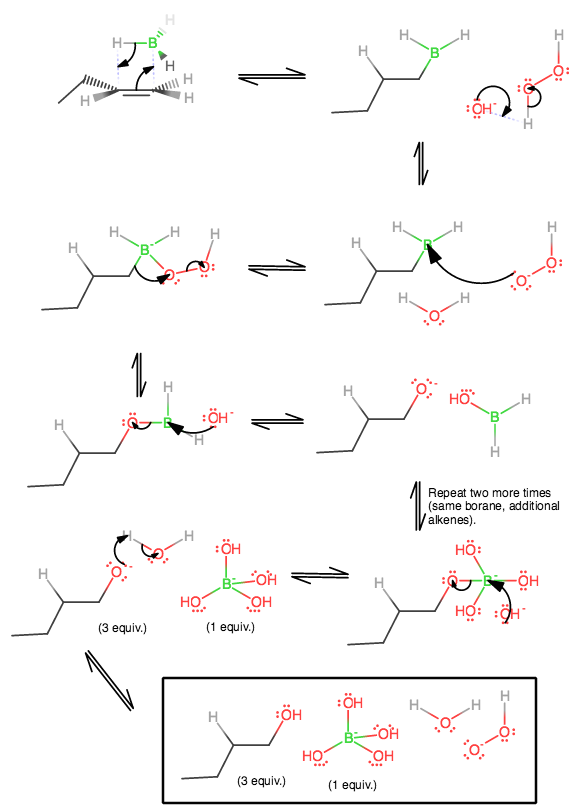Why is hydroboration anti-Markovnikov?
1 Answer
Because in the transition state, the electropositive carbon is more stable when it is the more substituted carbon.
A typical hydroboration taught in Organic Chemistry can use any equivalent way of expressing the following reagents:
1)
#"BH"_3# complexed with#"THF"#
2) ...followed by#"NaOH"(aq)# and#"H"_2"O"_2#
When
In the mechanism, you will see that the
These partial charges are not in front of each other, but on opposite sides of each other. This is crucial.
Also, you may have learned that the more stable carbocation is more substituted, thereby increasing the effects of hyperconjugation stabilization between the
And as it turns out, this configuration gives you anti-Markovnikov addition, i.e. hydrogen adds onto the more-substituted carbon, instead of the less-substituted carbon, because of the opposite locations of the partial positive and partial negative charges in the transition state.
Below, you can find the mechanism is as follows for an alkene (Organic Chemistry, Bruice):

1) This starts with the interaction of the
The left carbon is the one accepting electrons into its antibonding
This is important. Because the left carbon has a methyl and the right carbon has two hydrogens, the hydrogen adds to the side with LESS hydrogens, rather than more, correlating with anti-Markovnikov addition. This ensures the addition of the hydroxide on the LESS substituted carbon at the end.
2) Now, hydroxide must equilibrate with hydrogen peroxide, because the pKa of hydrogen peroxide is about 11.2, but that of water is about 15.7, so water is a weaker acid. The equilbrium lies on the side of the weaker acid.
3) Peroxide, being a good nucleophile now, can backside-attack boron's empty
4) A kinda freaky thing happens where the electrons shift from the
5) At this point, boron's
6) Thus, we form our alkoxide precursor to the alcohol. Now we repeat steps 1-4 once, move on to step 7, then go back to do steps 1-4 one more time, and then do 7 again.
7*) Here, we do step 5 again, except using the hydroxyborane that formed after performing step 6 with updated versions of the same borane.
8) Finally, we can finish this mechanism when the alkoxides acquire protons from the leftover water (remember, the
Ultimately, you end up with hydroxide on the LESS substituted carbon, and hydrogen on the MORE substituted carbon, an anti-Markovnikov addition.

